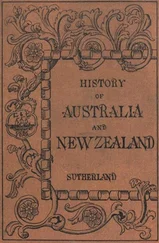William Finch-Crisp - Chronological Retrospect of the History of Yarmouth and Neighbourhood
Здесь есть возможность читать онлайн «William Finch-Crisp - Chronological Retrospect of the History of Yarmouth and Neighbourhood» — ознакомительный отрывок электронной книги совершенно бесплатно, а после прочтения отрывка купить полную версию. В некоторых случаях можно слушать аудио, скачать через торрент в формате fb2 и присутствует краткое содержание. Жанр: История, foreign_antique, foreign_prose, на английском языке. Описание произведения, (предисловие) а так же отзывы посетителей доступны на портале библиотеки ЛибКат.
- Название:Chronological Retrospect of the History of Yarmouth and Neighbourhood
- Автор:
- Жанр:
- Год:неизвестен
- ISBN:нет данных
- Рейтинг книги:5 / 5. Голосов: 1
-
Избранное:Добавить в избранное
- Отзывы:
-
Ваша оценка:
- 100
- 1
- 2
- 3
- 4
- 5
Chronological Retrospect of the History of Yarmouth and Neighbourhood: краткое содержание, описание и аннотация
Предлагаем к чтению аннотацию, описание, краткое содержание или предисловие (зависит от того, что написал сам автор книги «Chronological Retrospect of the History of Yarmouth and Neighbourhood»). Если вы не нашли необходимую информацию о книге — напишите в комментариях, мы постараемся отыскать её.
Chronological Retrospect of the History of Yarmouth and Neighbourhood — читать онлайн ознакомительный отрывок
Ниже представлен текст книги, разбитый по страницам. Система сохранения места последней прочитанной страницы, позволяет с удобством читать онлайн бесплатно книгу «Chronological Retrospect of the History of Yarmouth and Neighbourhood», без необходимости каждый раз заново искать на чём Вы остановились. Поставьте закладку, и сможете в любой момент перейти на страницу, на которой закончили чтение.
Интервал:
Закладка:
William Gould, Esq., appointed Lieutenant-Colonel of the 6th (Yarmouth) Norfolk Volunteer Infantry.
Night signals established along the coast, and special constables sworn in at Yarmouth.
Yarmouth Volunteer Infantry embodied for 14 days’ garrison duty.
The Rows first numbered; they formerly bore the names of houses in or near them, or persons living near them.
The public mind was much excited by a possible French Invasion, under Napoleon, and many Volunteer and Militia Regiments of Norfolk and Suffolk did garrison duty here.
The Gorleston Volunteers had a field day, when the manœuvres were done in a masterly style, under Captain J. B. Bell. They afterwards dined at the “Feathers” Inn.
Hay was sold at £4 10s. per ton.
The winter was a very severe one, more intense than in 1740. Coals were 2s. a chaldron.
Capt. Dickens, of the Shropshire Militia, walked from the “Angel” Inn, at Yarmouth, to the “Angel” Inn, at Norwich, and back again (47 miles) in 11½ hours, for a wager.
A very large sale of 50 prize ships was advertised to take place at Yarmouth on the 25th. These were principally Dutch vessels used as privateers and fishing vessels, and the description of them took about one column of space. No auctioneer was named, but catalogues were to be had of Mr. A. H. Steward, of Great Yarmouth.
Mr. Aldred, of Yarmouth, met with a serious loss by being robbed in Long Lane, Smithfield, of notes, bills, and jewellery, to the amount of £2,000. He was seized from behind a chaise by a daring street robber, who eluded the vigilance of the police.
April 27th. Two gun-brigs, 14 guns each, built in Mr. J. Preston’s yard, launched.
May 9th. One of the sharpest presses ever remembered in Yarmouth took place. No fewer than 300 persons of the town were impressed, of whom only about 50 were ultimately detained. (See 1802.)
Nov. 7th. Intelligence received of the glorious victory over the combined fleets of France and Spain, off Cape Trafalgar, on the 21st of October, though purchased by the ever-to-be-lamented death of Vice-Admiral Lord Viscount Nelson, who was born at Burnham Thorpe, Norfolk, September 29th, 1758. Congratulatory addresses were voted to his Majesty by Yarmouth; feu de joie fired by the military and volunteers.
Several regiments of Volunteers did garrison duty in the town till relieved by the Shropshire Militia.
April 19th. The frigate, “Boreas,” 28 guns, launched from Messrs. Stone and Constance’s yard; the sloop, “Ariel,” 18 guns, from Mr. N. Palmer’s yard.
June 9th. Vice-Admiral Russell, accompanied by several officers of the North Sea Fleet who were stationed at Yarmouth, visited Norwich.
July 26th. French frigate “La Guerrière,” brought into the Roadstead by the frigate “Blanche.” The former was captured on the 18th, after a desperate action of 45 minutes; she had taken eight Greenlandmen and one Yarmouth vessel, all of which she destroyed.
Aug. 14th. Frigate “Comus,” launched from Messrs. Constance and Co.’s yard.
Nov. 4th. Hon. E. Harbord (second son of Lord Suffield) and Stephen Lushington, Esq., returned to Parliament, but on June 25th, 1808, Dr. Lushington vacated his seat in favour of Giffin Wilson, Esq.
An Act of Parliament passed for repairing the Parish Church of Great Yarmouth and rebuilding the tower belonging to it. (See 1803.)
Southtown Armoury built by Wyatt, at a cost of £15,000. During the war 10,000 stand of arms were arranged in it, after the disposition observed in the Tower of London. After the war the arms were removed to the Tower.
The gun-brig, “Fancy,” built in Mr. J. Preston’s yard.
Feb. 17th. Gun-brig “Snipe,” with 30 French prisoners on board, wrecked on the Beach. Many of them were drowned, together with part of her crew and some women, in all upwards of 60. There were several other wrecks, for the wind blew a hurricane, and a drifting snow rendered the highways for a time impassable.
Feb. 18th. Capt. G. W. Manby, barrack-master at Yarmouth, first succeeded in projecting a line over a stranded vessel; and on Feb. 12th, 1808, seven lives were saved from a vessel 150 yards from the Beach. Parliament rewarded him at different times with grants amounting to £6,000. He was born at Hilgay, Norfolk. Captain Manby, at the age of 88 years, had the satisfaction of knowing that he had been instrumental in saving upwards of 1,000 lives in various parts of the world by his invention. The two ingenious painters (the Joys), brothers and sons of a mail-guard, owed much of their fame to the patronage and assistance afforded them in their youth by Captain Manby.
May 9th. Hon. E. Harbord and S. Lushington, Esq., returned to Parliament. Votes – H., 627; L., 604; William Jacob, 341; A. Upcher, 21.
July 3rd. Mrs. Cooper, relict of the Rev. D. Cooper, of Yarmouth, died. This lady, with an ardent desire to inculcate Christian morality, penned several publications, viz., “Fanny Meadows,” “The Daughter,” “The School for Wives,” and “Exemplary Mother.”
July 26th. The fleet, under Lord Gambier and Vice-Admiral Stanhope (69 pennants in all), sailed from Yarmouth Roads. Sir W. Sidney Smith sailed in Gambier’s flag-ship, “Prince of Wales,” 98 guns. Soon afterwards was fought the second battle of Copenhagen (Sept. 7th). Most of their prizes were brought to Yarmouth – 64 vessels mounting 1,994 guns.
Aug. 14th. E. H. K. Lacon born. He was educated at Cambridge, and created a baronet in 1820 on the death of his father.
Sept. 7th. Norwich Volunteer Infantry marched to Yarmouth for garrison duty.
Oct. 29th. Several transports lost off Yarmouth and Lowestoft.
Nov. 14th. Privateer “Le Décide” brought into this port by the frigate “L’Amiable.” She had made no less than 30 prizes.
Nov. 2nd. Louis XVIII. (under the title of Count de Lille) landed at Yarmouth from a Swedish frigate. The Dukes d’Angouleme and De Berri, and several French noblemen, came with him. This was the first time since the memorable battle of Poictiers, in 1356, that a King of France had been in England.
Dec. A Telegraph erected upon the hill at Thorpe communicating with Yarmouth. An order from the Admiralty Office in London was received at Yarmouth in seventeen minutes.
North Gate removed to widen the roadway. It was flanked with square towers of curious workmanship.
One hundred and forty-four dead bodies washed ashore in this vicinity after a heavy gale.
A new peal of ten bells put in the tower of St. Nicholas’ Church, and first rung out on May 2nd, 1808. Cost £1,161 8s. 4d. The spire of the Church was also rebuilt the same year.
Jan. 10th. Lord Hutchinson and Lord Gower landed here from the “Bellette” sloop-of-war, from St. Petersburgh.
March 30th. Silver eel, 6 ft. long and 21 in. in girth, and weighing 42lbs., caught a mile below Yarmouth bridge in the harbour.
May 10th. Expedition, consisting of 105 transports, under Admiral Keats, left the Roadstead for the Baltic and the protection of Sweden. Sir John Moore commanded the troops. He sailed in the “Mars,” and Major-Generals Paget and Murray in the “Audacious.”
Aug. 20th. First pile of the present Jetty driven, and finished building and opened to the public Jan. 13th, 1809, at a cost of £5,000; 450 ft. long, and platform 21 ft. wide. Extended 60 ft. in 1846 at a cost of about £900, and again 60 ft. in 1870 at a further cost of £859 10s. Constructed on the site of one built in 1560.
Charles Townshend, Lord Bayning, High Steward of the Borough.
Shropshire and Cambridgeshire Militia left the town.
Jan. 28th. Owing to a rapid thaw and the inundation of the meadows the barges proceeding from Norwich to Yarmouth were obliged to return, because the men were unable to find the channel of the river.
Читать дальшеИнтервал:
Закладка:
Похожие книги на «Chronological Retrospect of the History of Yarmouth and Neighbourhood»
Представляем Вашему вниманию похожие книги на «Chronological Retrospect of the History of Yarmouth and Neighbourhood» списком для выбора. Мы отобрали схожую по названию и смыслу литературу в надежде предоставить читателям больше вариантов отыскать новые, интересные, ещё непрочитанные произведения.
Обсуждение, отзывы о книге «Chronological Retrospect of the History of Yarmouth and Neighbourhood» и просто собственные мнения читателей. Оставьте ваши комментарии, напишите, что Вы думаете о произведении, его смысле или главных героях. Укажите что конкретно понравилось, а что нет, и почему Вы так считаете.












